Andi has been on the latest version of the SRAM GX Eagle drivetrain with new 520% range cassette for 2 weeks, and here are his first impressions.
Before we delve in I want to stress that this is a first ride impression of the latest SRAM GX Eagle drivetrain and not a long-term review, so keep in mind some questions may go unanswered until I’ve really piled on the miles. Now with that out of the way, let’s take a look at what’s new.
The SRAM Eagle story started back in 2016 with the release of XX1 Eagle, the first 12 speed drivetrain and perhaps the final nail in the front derailleur’s coffin. Sure, we had 1 x 11 before this, but 1 x 12 gave us that magic 500% range. A year later Eagle went mainstream with the release of the affordable GX 12-speed drivetrain. It was a bold move for SRAM to jump right from XX1 to GX, but it was a smart choice and for the past few years bike specs have been dominated by this workhorse of a drivetrain.
Over the years I’ve ridden many, many SRAM GX Eagle equipped bikes and overall I like it. The light upshifts and chunky downshifts are all second nature to me, and while the rear mech is sensitive to B tension adjustments I’ve learned to maintain my Eagle drivetrains and enjoy them all year long.
As much as I like the original GX Eagle though, it is rather dull, and it hardly looks all that fancy. Now, I know that looks aren’t everything, but they do count for something when you’re picking out a swanky carbon enduro bike and dropping a few G’s in the process.
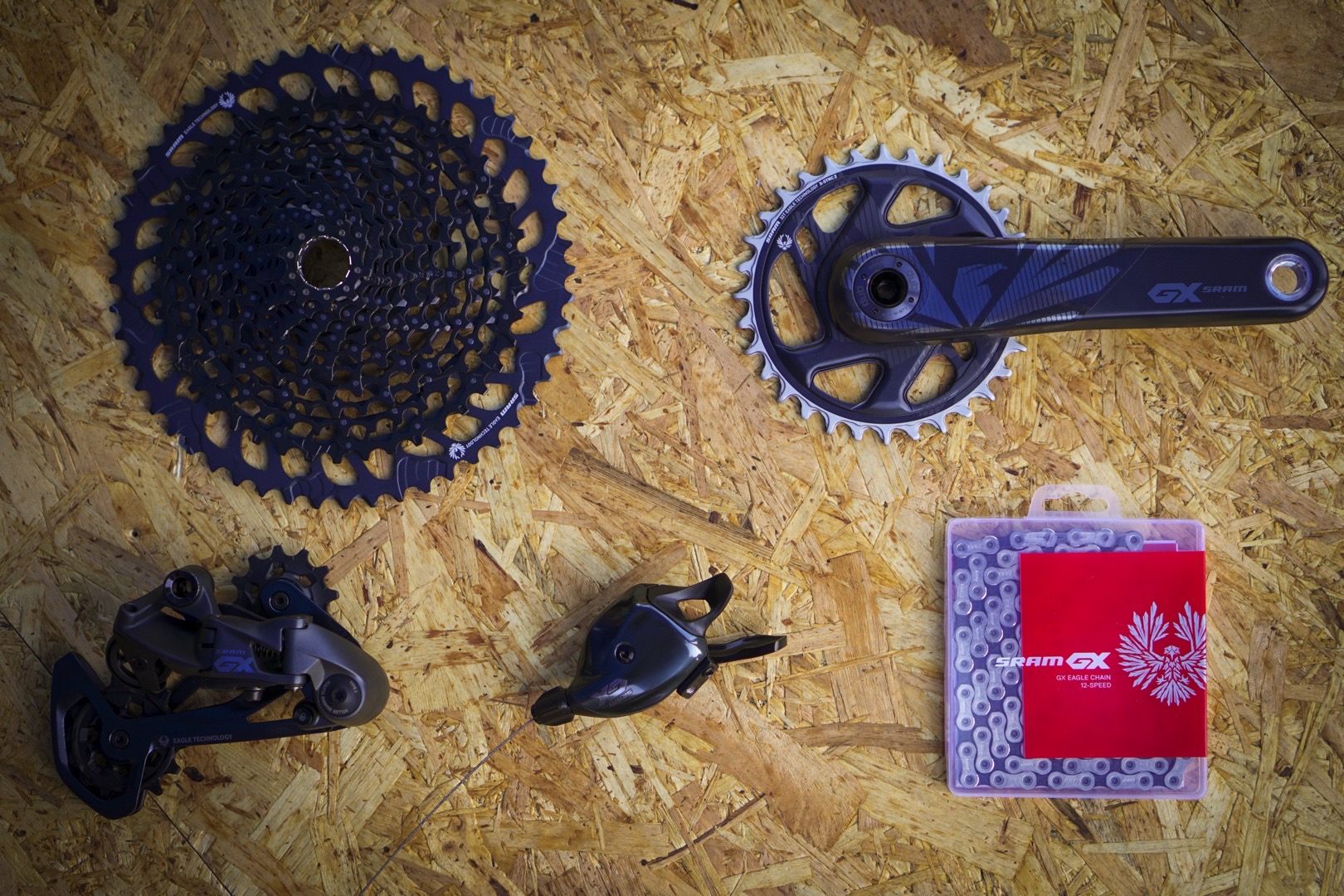
So as good as GX Eagle was, it certainly needed a makeover, and while SRAM was dolling its daily-driver up, it decided to up the range too.
520%
SRAM GX Eagle XG 1275 520% Cassette
- Price: £196
- Weight: 452g
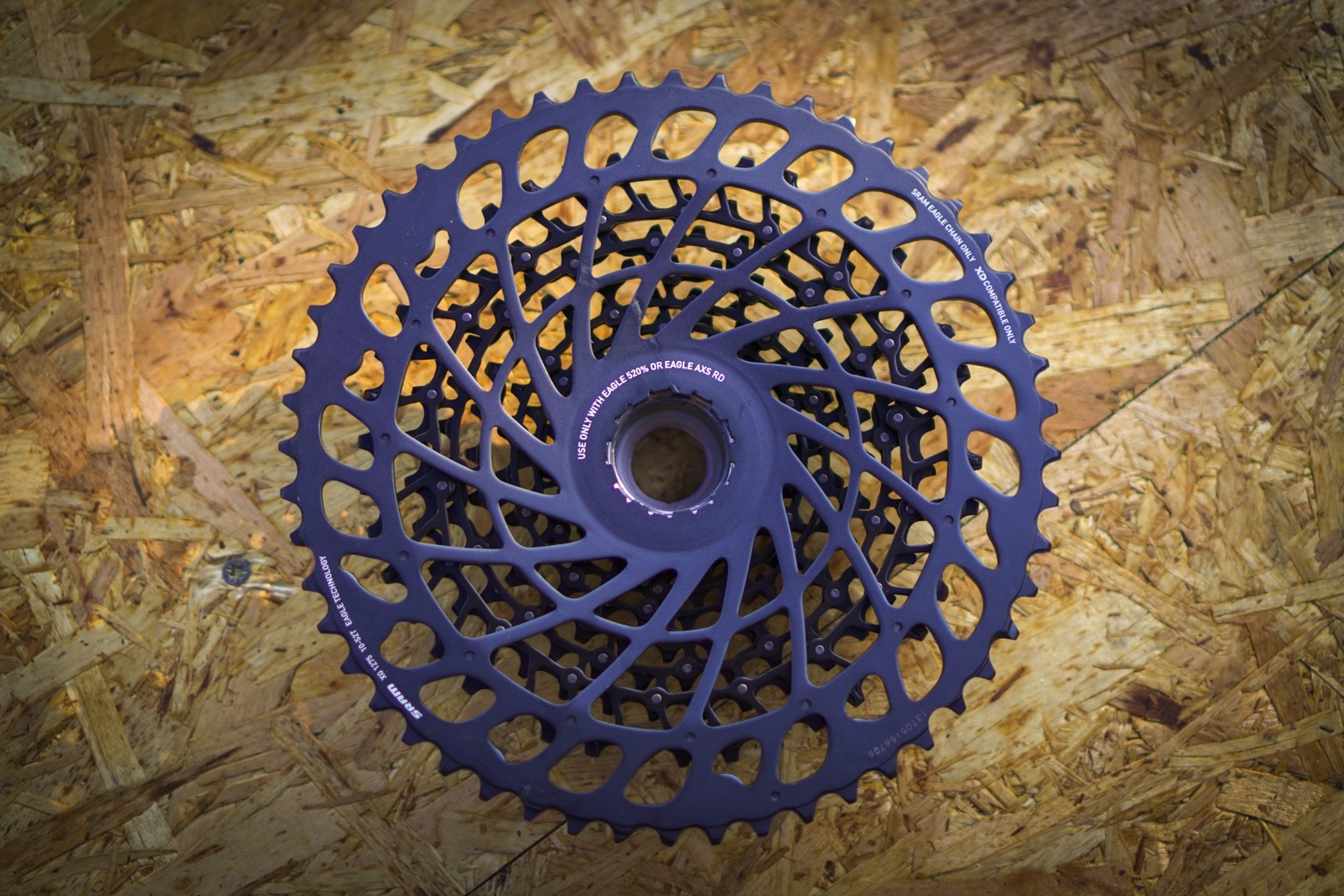
Yeah, so a 500% gear range is so 2017, for 2022 SRAM has gone to 520% by increasing that already monstrous dinner plate of a cassette from 50T to 52T. The new SRAM XG-1275 Eagle cassette now features a 10-52 spread (10, 12, 14, 16, 18, 21, 24, 28, 32, 36, 42, 52) while retaining SRAM’s XD standard meaning if you already run Eagle you’re not going to have to worry about another new standard getting in the way of your upgrade route.
The whole idea of moving up to 52T is to give riders more range for longer, more epic rides. The increase to 520% gives you an even bigger bailout gear for those monster climbs at the end of a long day in the saddle.
Construction is similar to that of the original GX Eagle cassette using aluminium for the largest cog and stamped and pinned steel for the remaining 11. Each cog in the cassette is heavily machined to remove any unwanted material helping to reduce the overall weight, while also increasing mud clearance. SRAM’s FULL PIN technology holds all the pieces together with stainless steel pins.
To bring the aesthetics up a notch, SRAM has introduced a new ‘Lunar’ colourway for GX Eagle. A satin-y slate kind of colour. The new XG-1275 cassette has a Lunar coloured 52T alloy cog, while the 11 steel cogs are all finished in black.
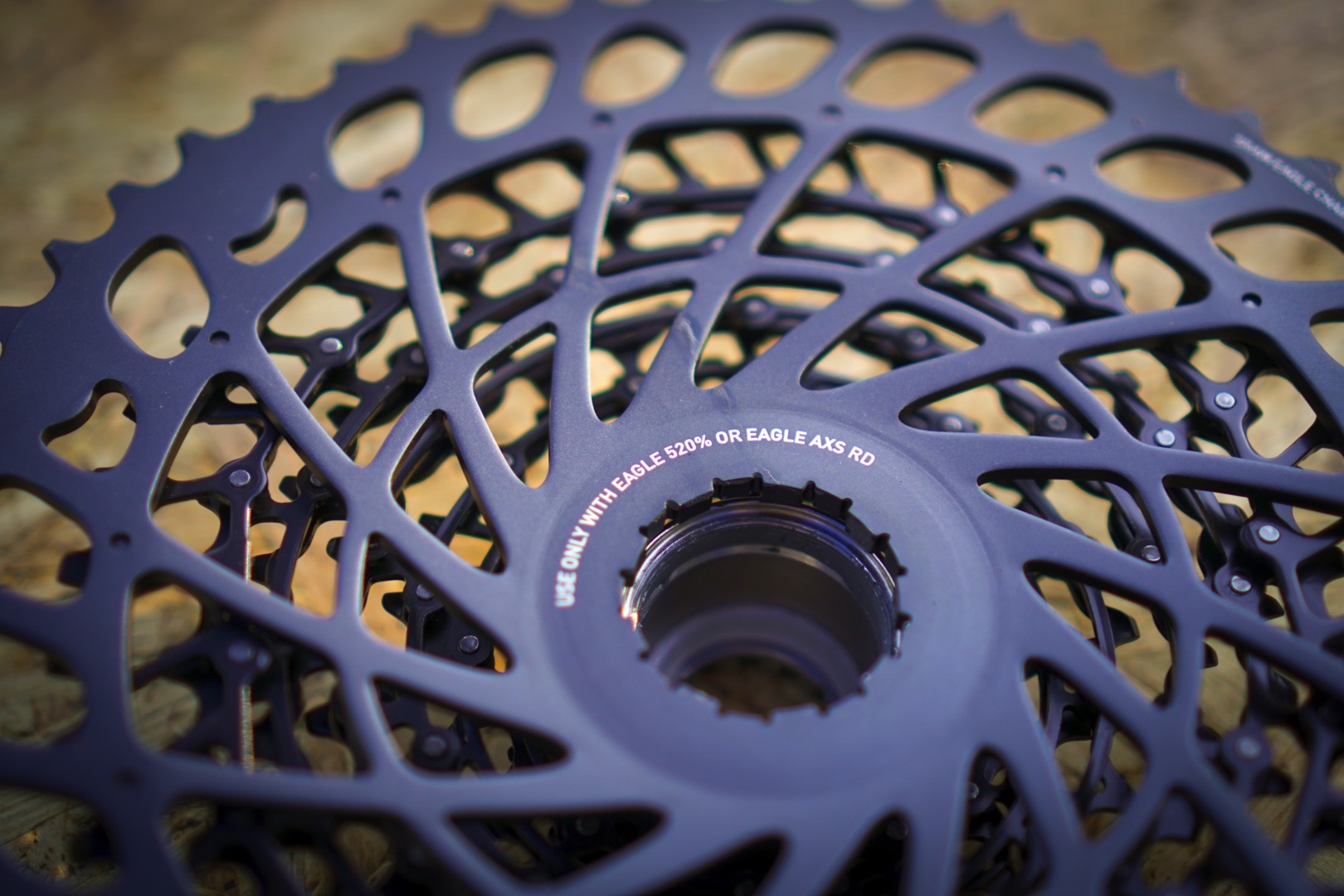
Weight of the new cassette is 452g which is just a few grams more than the previous version (448g) but that’s still quite a lot heavier than the new XX1 10 – 52T which weighs only 372g.
New GX Eagle Rear Derailleur
- Price: £110
- Weight: 299g
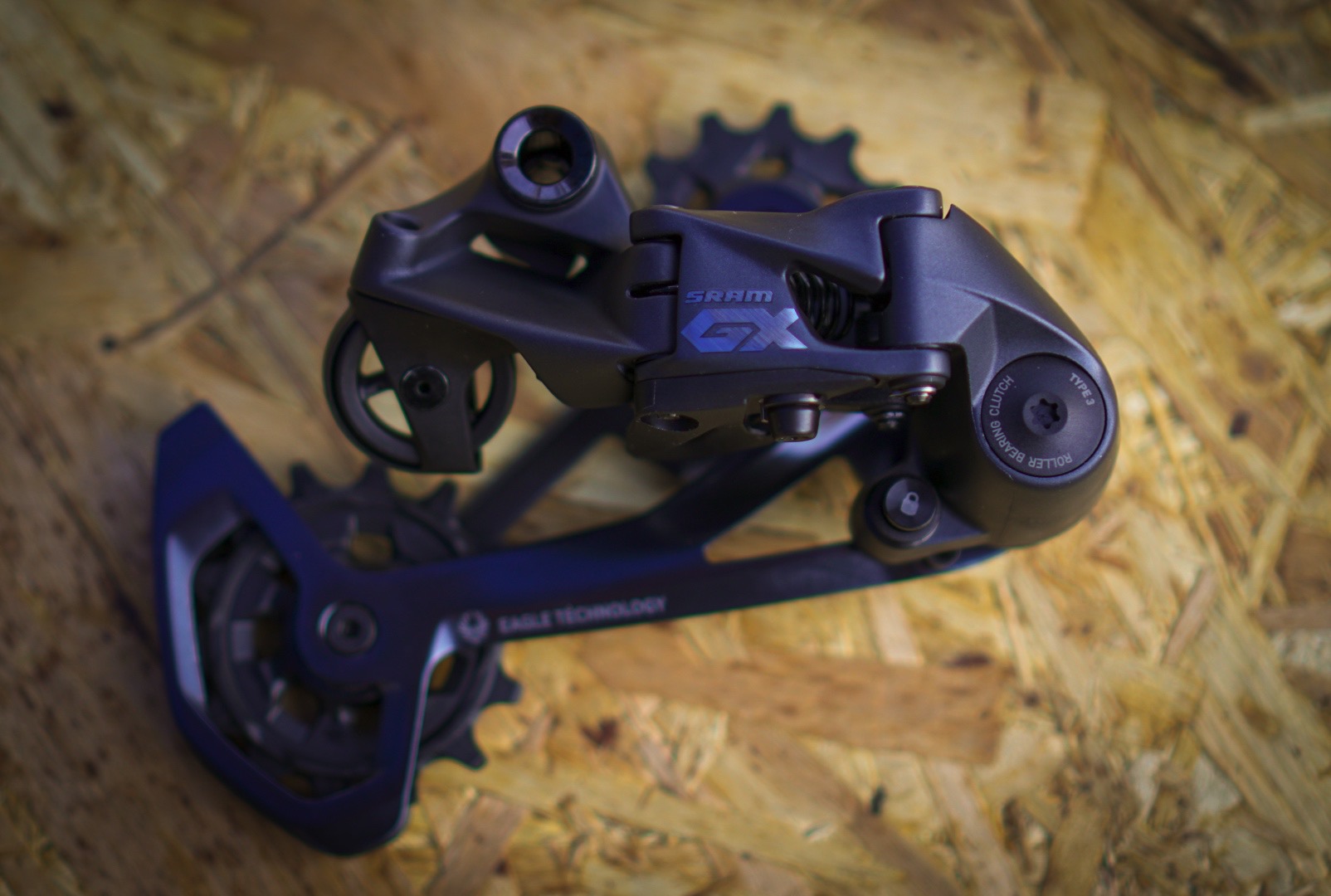
Now, one of the questions I am sure many of you are going to ask is if you can use that 11-52 cassette with your current SRAM GX Eagle rear mech, and the answer is no, not unless you only want to shift up. The old mech’s performance on the new cassette is fine for upshift but not downshifting so to get a fully working 520% range GX Eagle setup you’ll need one of the new rear mechs (unless you have the SRAM Eagle AXS wireless group. AXS was designed with 520% in mind and will work).
To ensure the rear derailleur can reach that 52T cog, which is larger than the 203mm disc on the rear of my bike I might add, SRAM has had to change the position of the pivot points and an updated architecture that has been optimised for 52T. The updates also help to improve shifting precision and chain retention, though this is something I’ve never had an issue with on GX.
The new mech also comes with a new tool for setting up B tension. SRAM has always shipped a plastic guide tool with Eagle mechs to help with setting up but new derailleurs come with a new tool that sits on the largest cog and points to the centre of the jockey wheel when the chain is on the 42t.
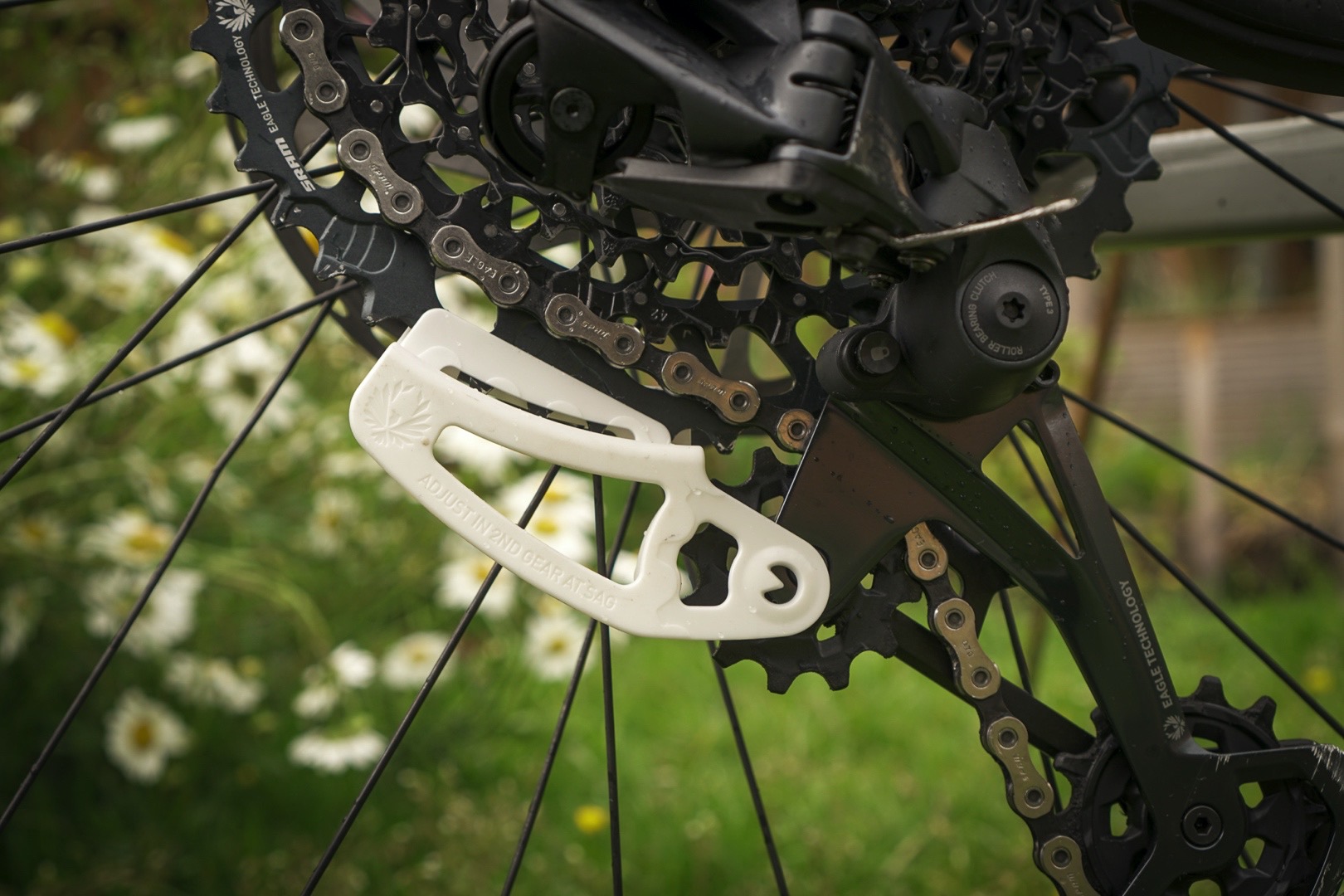
You should set the B tension up under sag so you might need someone to help you check the position, but it as simple as following an arrow and takes next to no time to get set.
Though optimised for the larger cassette, the new mech is backwards compatible, so riders not wanting or needing a 520% range can drop down to 500%.
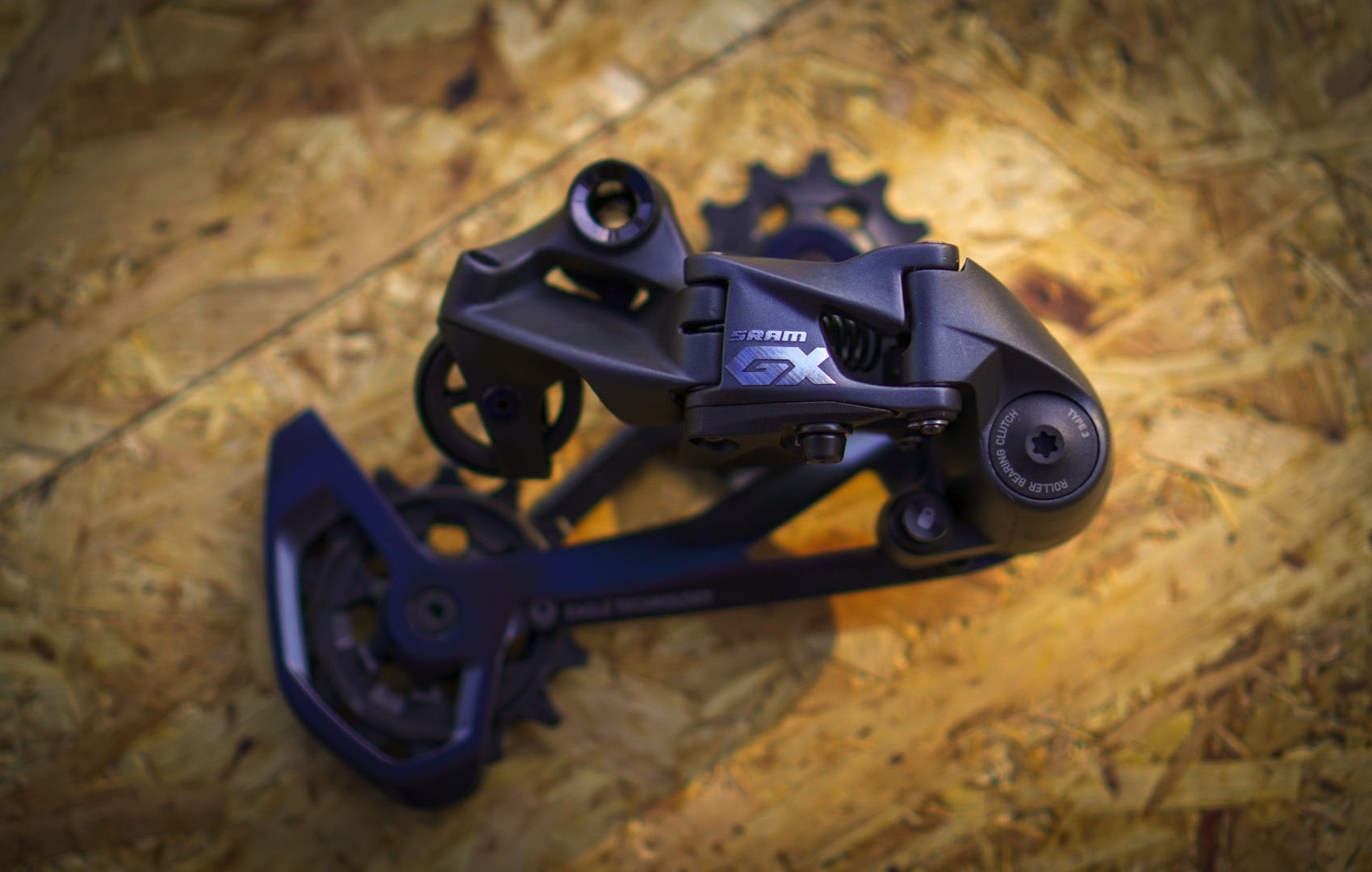
Like the rest of the drivetrain, the new rear mech comes in the signature GX ‘Lunar’ finish, and will happily work with all the new Eagle chains in black, rainbow, gold and (new) copper. And like other Eagle mechs, the new GX is larger than older 11-speed stuff so you will have to watch it on tight rocky sections. As you will see in the photos below, I’ve knocked my mech and scraped the cage, but shifting remains crisp and slick.
Features which remain are the clutch mechanism and a cage lock for when you remove the rear wheel.
GX Eagle Carbon Chainset
- Carbon Price: £260 (w/o DUB BB)
- Carbon Weight: 555g
- Alloy Price: £134 (w/o DUB BB)
- Alloy Weight: 620g
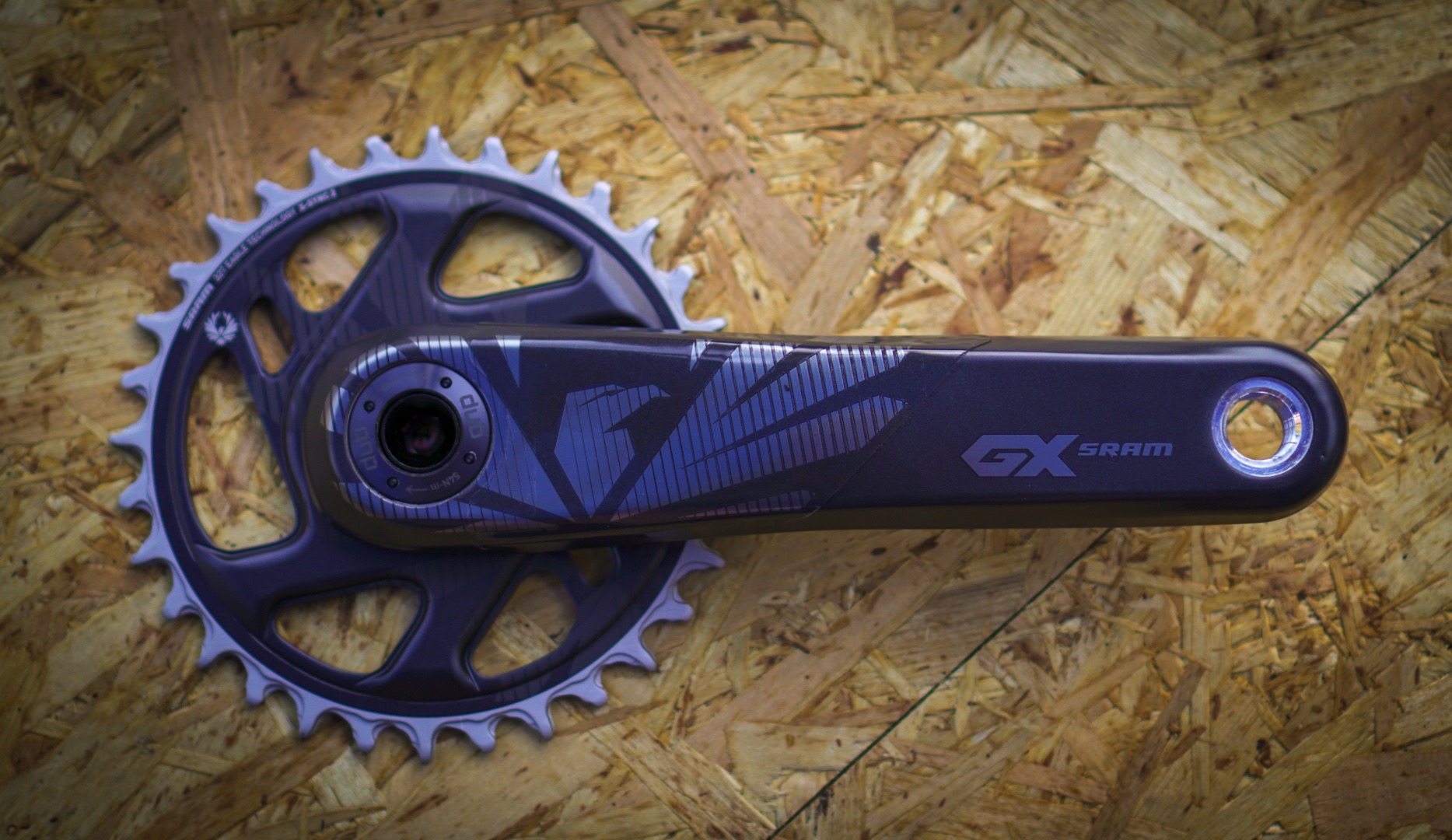
I mentioned GX getting a makeover and if a new colour wasn’t doing it for you what about these new carbon cranks? SRAM is offering an alloy chainset at a lower price, but I’ve been running the Carbon GX Eagle crankset with SRAM’s X-SYNC 2 chainring.
The carbon crankset uses a proprietary carbon layup, is compatible with any 1 x drivetrain and of course uses SRAM’s DUB standard bottom bracket system for improved fit and sealing. The X Sync 2 ring mounts directly to the chainset and also features that new Lunar finish.
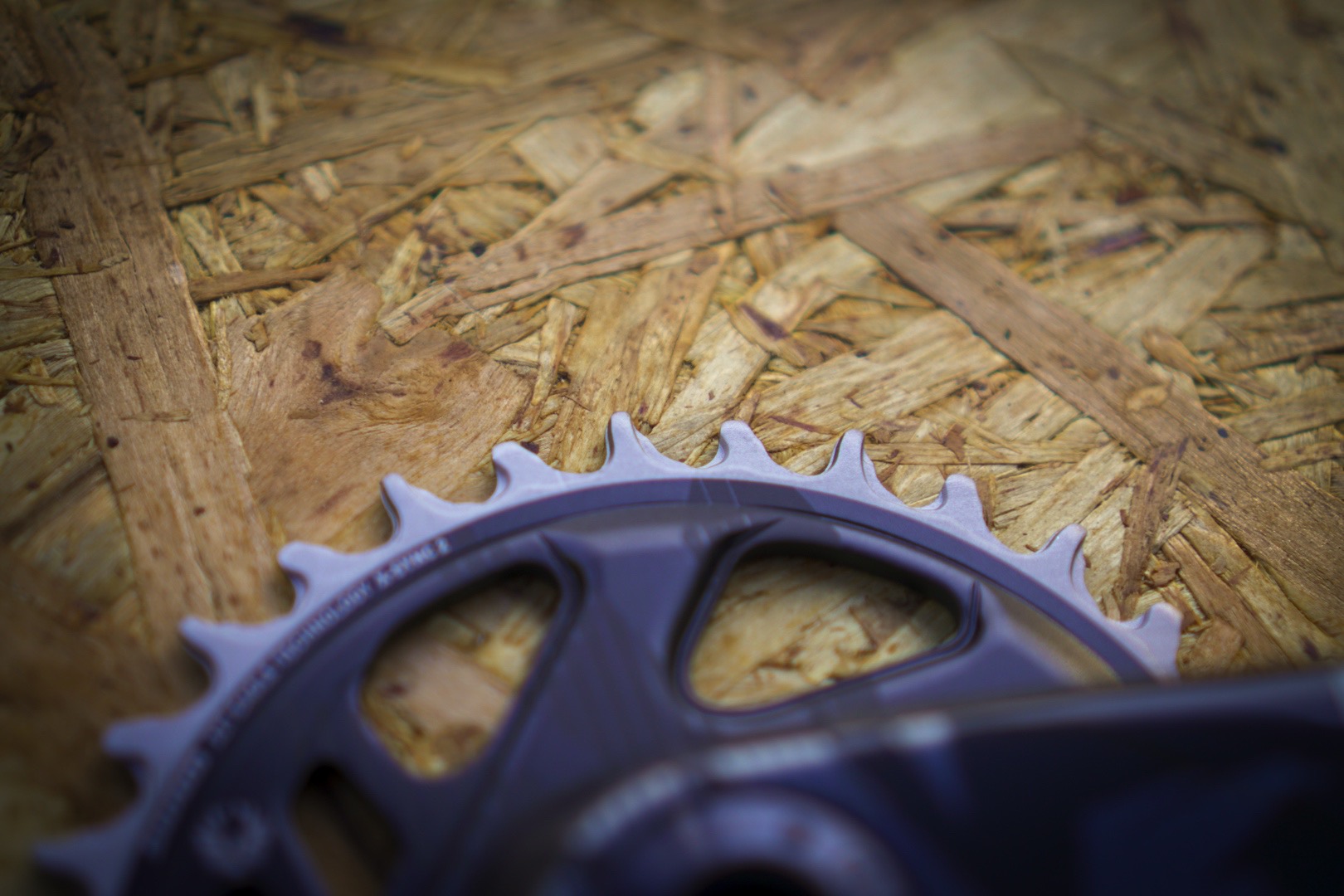
To keep the carbon cranks looking fresh, SRAM has fitted some protective film to save them from rub and wear. These crank arms are the shorter 170mm versions but they also come in 175mm, riders wanting shorter will need to choose the alloy versions which are available in 165mm, 170mm and 175mm.
Weights for the carbon crankset is 555g whereas the alloy model is 620g.
Oh and the shifter!
- Price: £36
- Weight: 122g
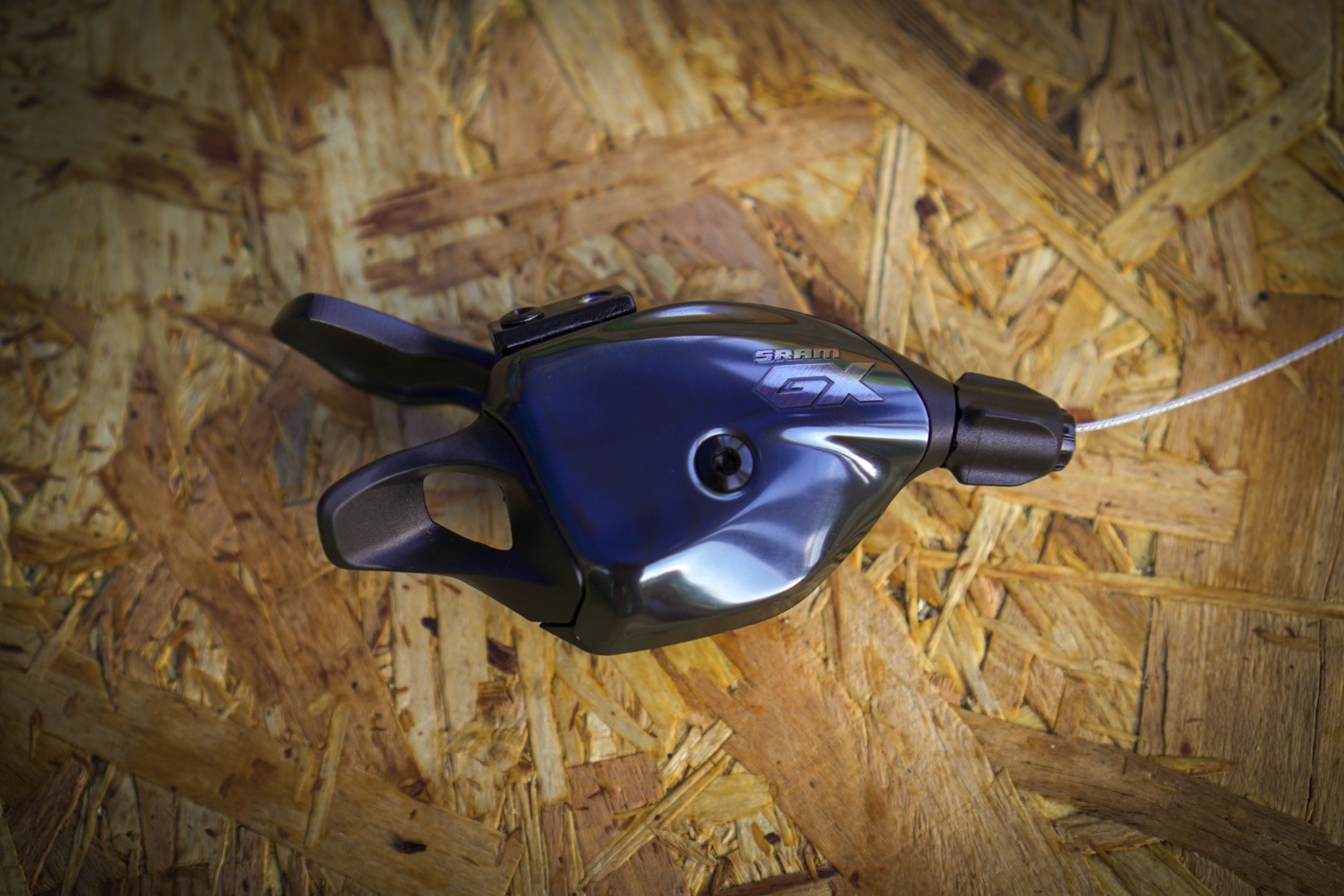
And finally the shifter, now in that same flashy Lunar finish and with an aluminium trigger for upshifts for a more positive feel. The shape of the trigger is still more angular than that of X01 and it isn’t adjustable like the more expensive model, but it’s a worthy upgrade over the original.
There’s less float in the lever too, though there still isn’t a bearing so the overall feeling isn’t quite as smooth as X01, but not far off, not far off at all.
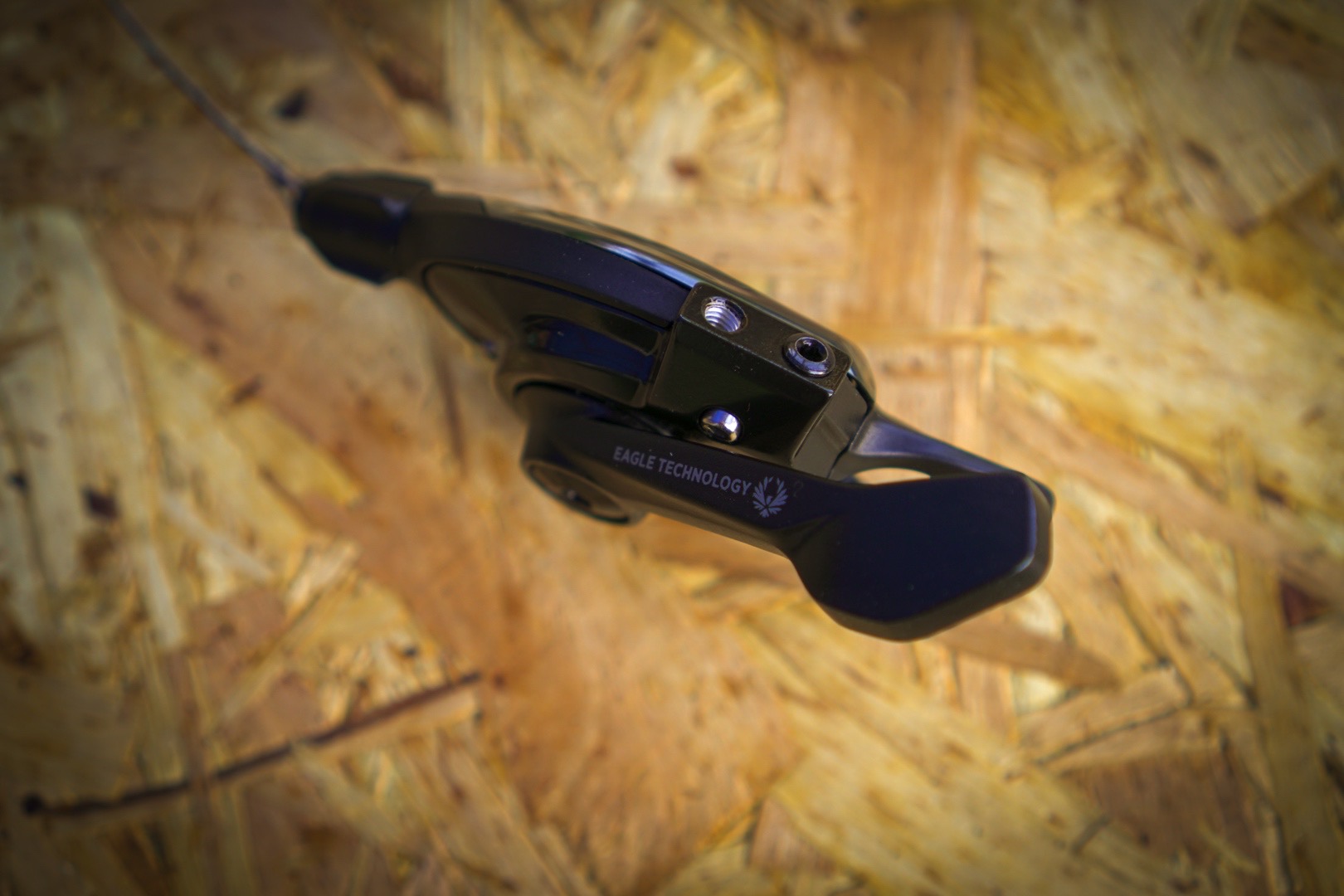
The model we have on test is the standard version which allows for 5 multiple shifts at once, there’s also an eMTB model that shifts one gear at a time to reduce strain on the chain and mech.
So is it 20% better?
I’ve spent the past couple of weeks on the SRAM GX so I can’t comment on how the bigger cassette lasts, but as SRAM has stuck to the same alloy/steel construction I have no doubt that the teeth will retain their shape and shifting performance will remain reliable for a long time to come.
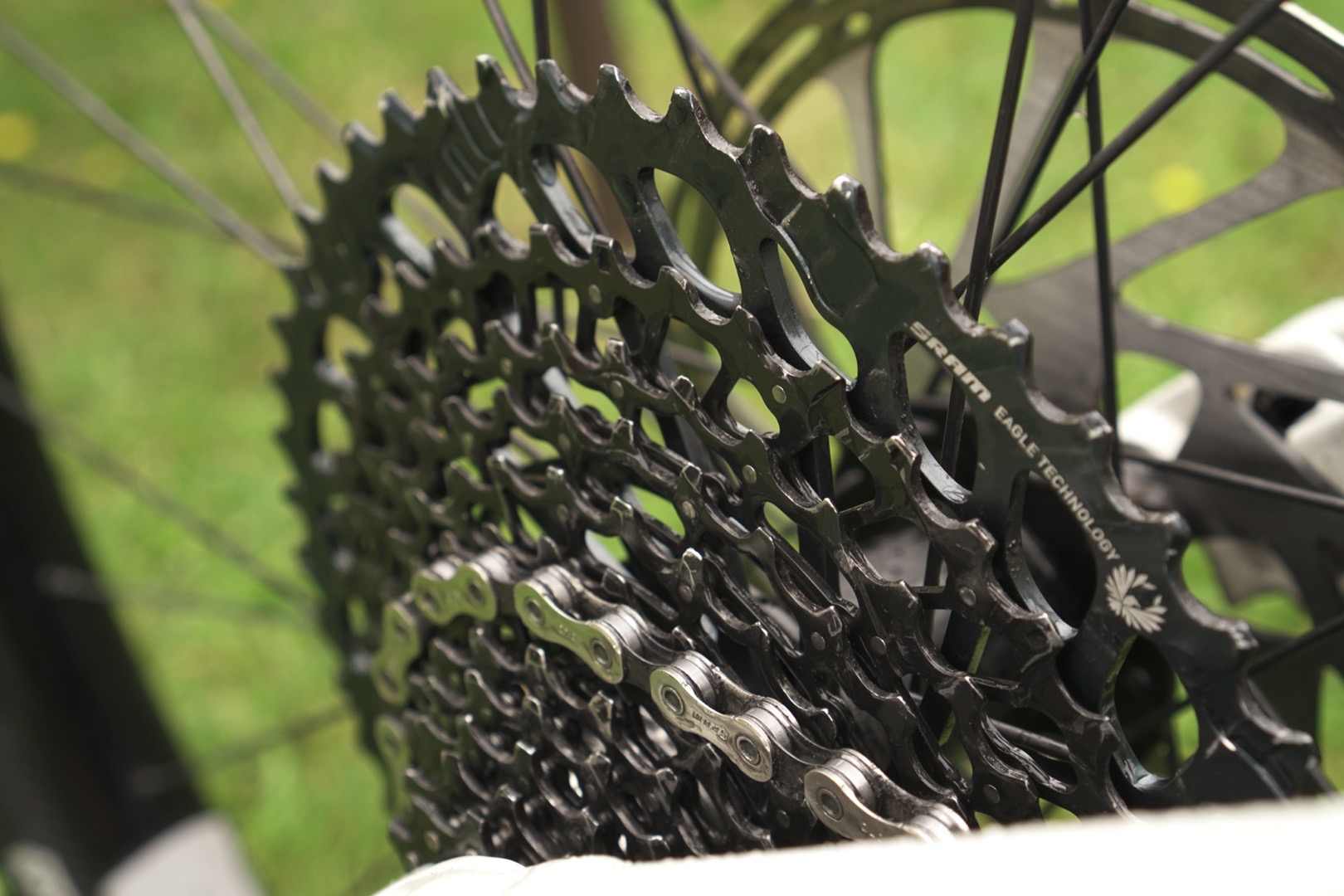
The step from 42 to 52 in the final large gears of the range did have me wondering if the jump might be too much but it’s only a 2 tooth jump over the 500% range cassette. Instead of an 8 tooth jump from 42-50, it’s a slightly bigger 10 tooth step. What that translates to on the trail is a far easier big gear, one you can save in reserve for those extra steep climbs, or the final long slog home. It’s not a shockingly large jump, but it is noticeably easier than the 50T on those unexpected pre-Jaffa Cake rises.
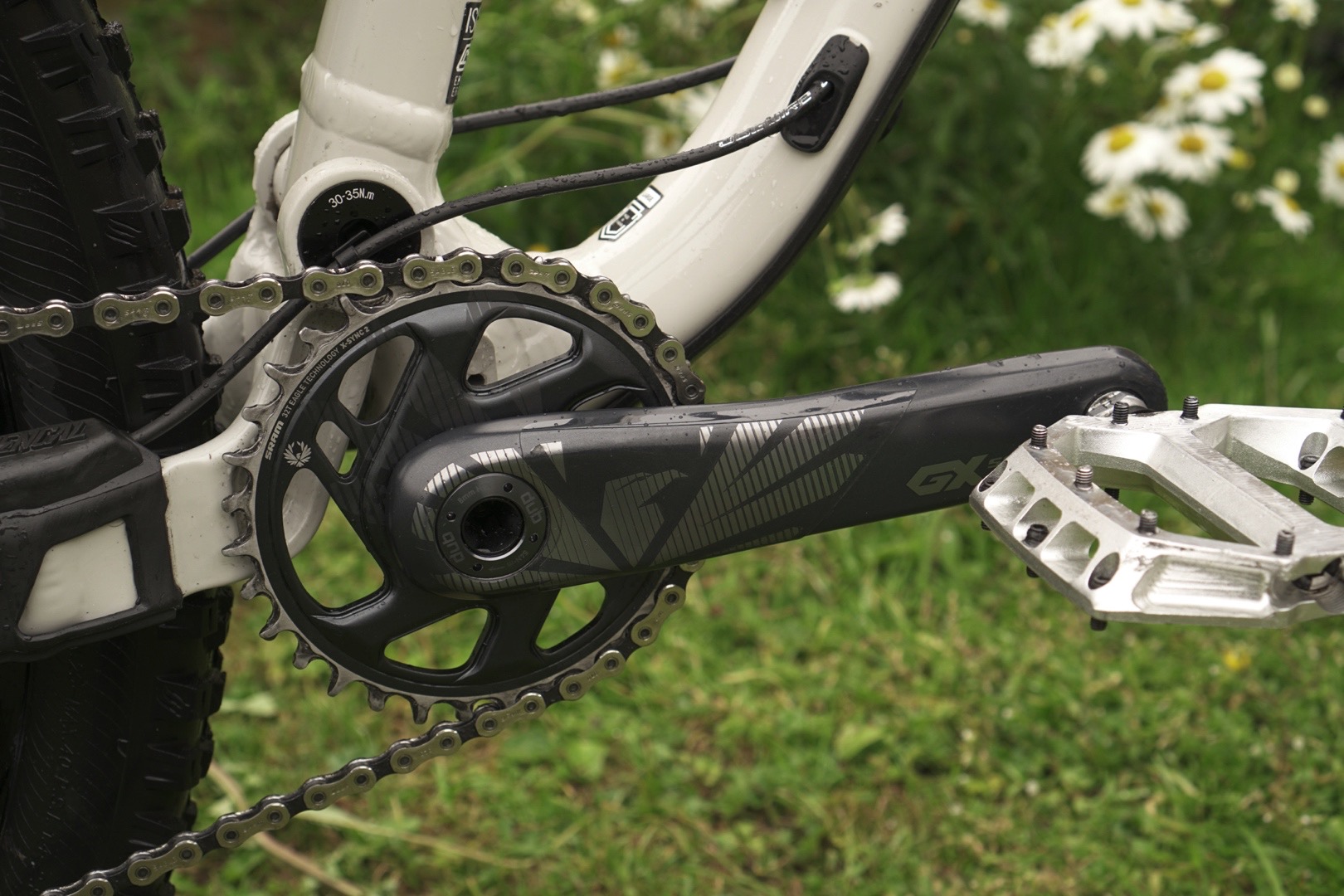
Shifting performance, though crisper, is slick and smooth even under load. The feel is light rather than Shimano chunk and clunk, but it’s positive and engages accurate from gear to gear or even when sweeping across the block in one swoop.
I can’t comment on the durability of the rear mech over the long term yet, but over the short term, the new Eagle GX RD has taken a bit of a battering yet it still shifts as good as new. The shifter, with its new alloy trigger, helps to improve the feel of upshifts and riding the X01 equipped YT Izzo back to back I feel that new GX is much more in line with the high-end kit, not quite as slick but hardly noticeable.
What could be improved.
- So far I have no complaints with the new GX Eagle but I will be keeping an eye on durability of the rear mech over the coming months, wear and continued shifting performance so keep an eye out for updates.
What I loved.
- The new Lunar finish makes a great workhorse of a drivetrain much more classy.
- Carbon cranks are a great addition. They look and feel fantastic and help to boost the appeal of GX while dropping the grams.
- Shifting performance feels exactly like the outgoing GX, perhaps with a slight better lever action. I was also surprised that the step from 42-52 didn’t feel like a massive jump.
Overall
SRAM GX was a major breakthrough when it was originally launched. It quickly became the go-to 1 x 12 drivetrain for many, but it never looked the part. The new 520% range GX Eagle makes gives the range a much-deserved makeover, bringing it closer in touch with X01 and XX1.
The new finish and colours are a touch of class and 520% range give you an even smaller excuse for not tackling that final climb. Overall a great looking, and slick drivetrain.






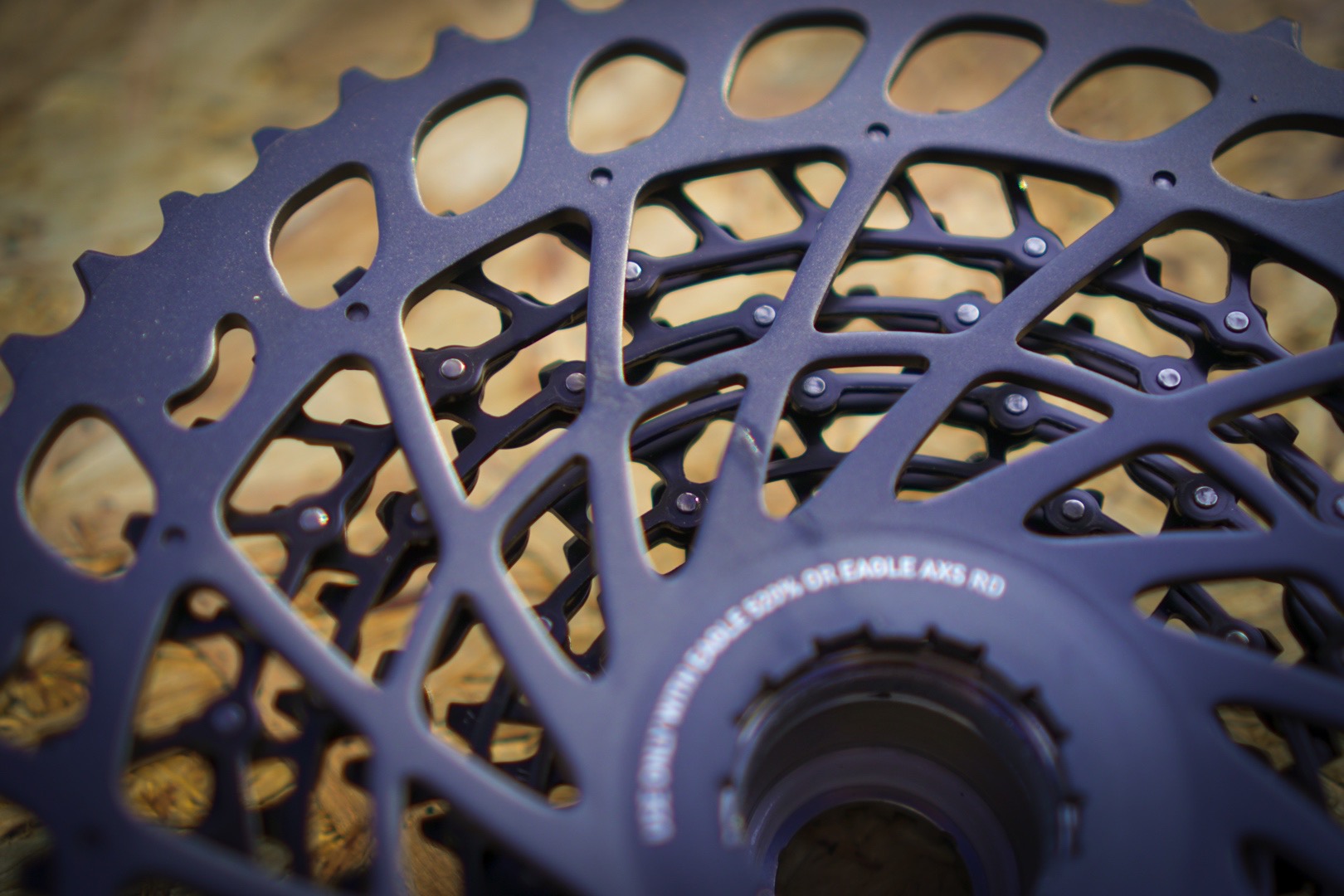

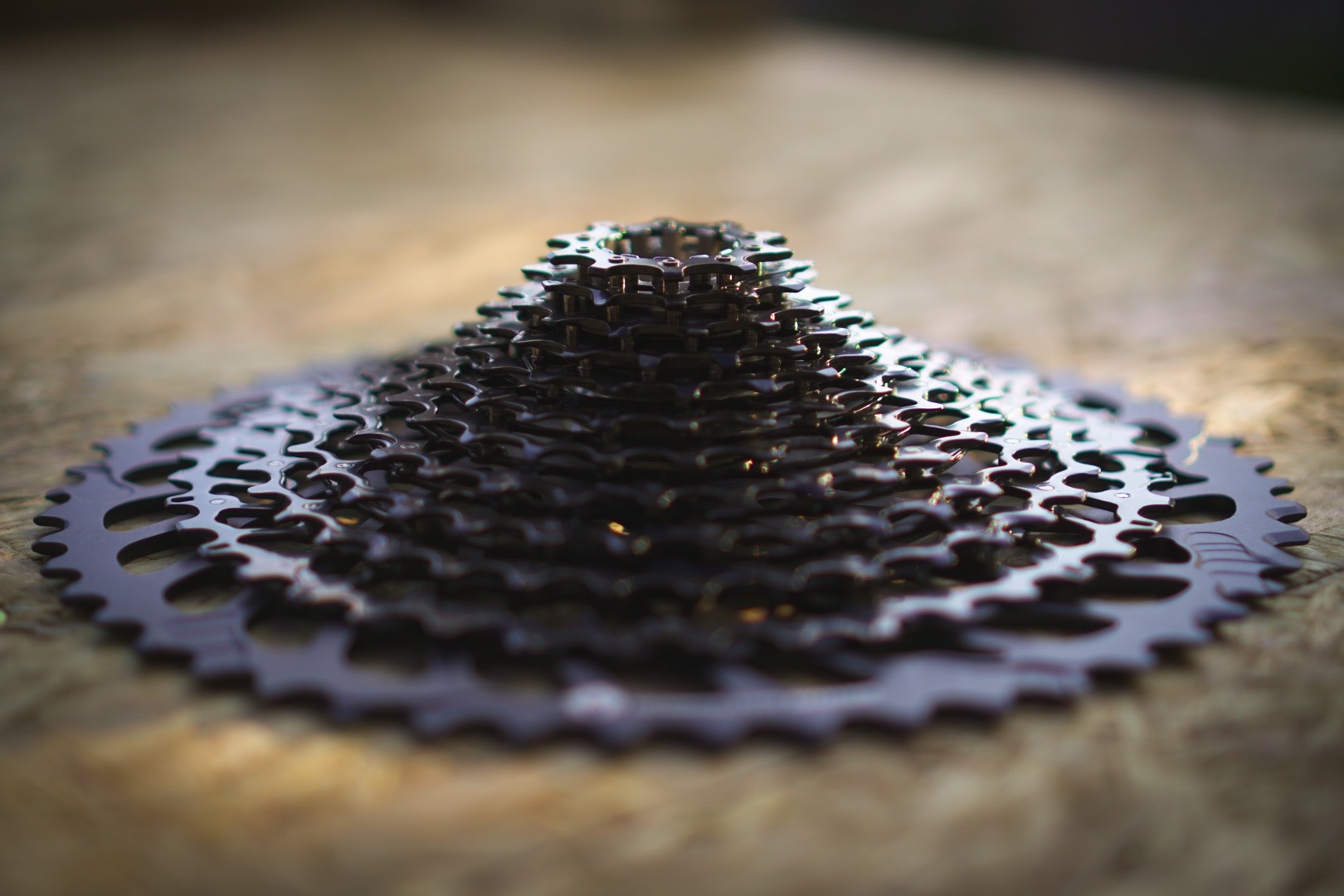
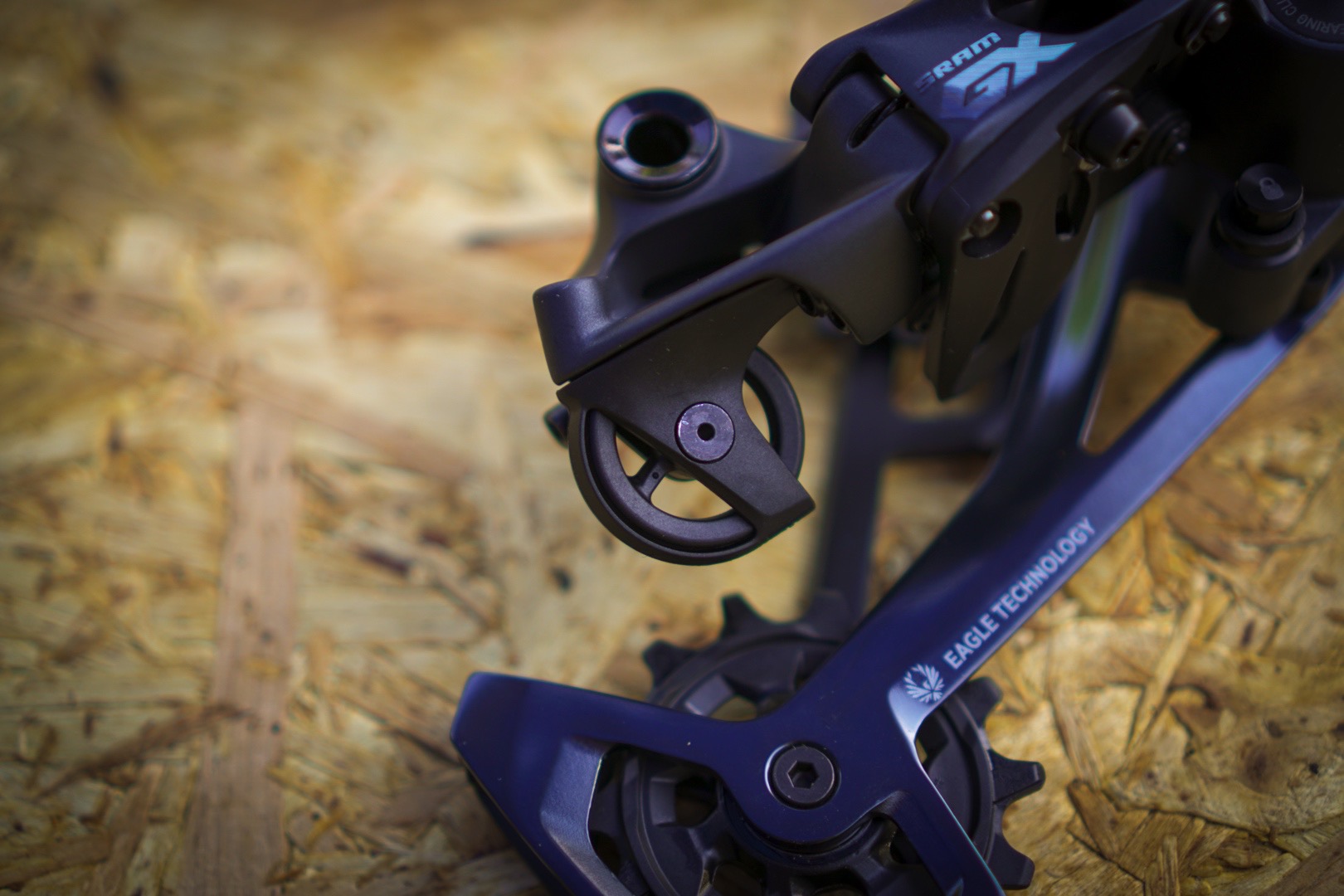
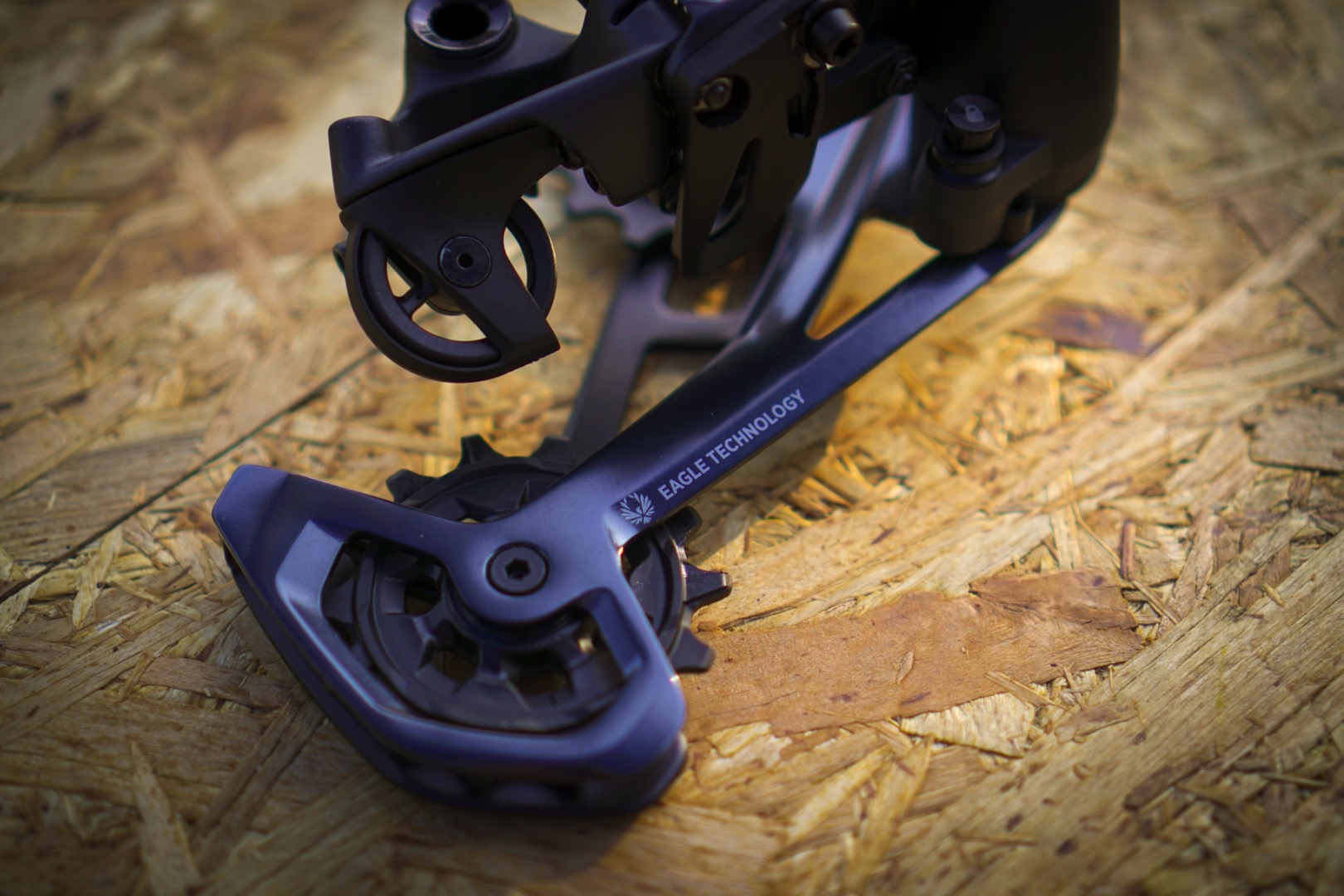
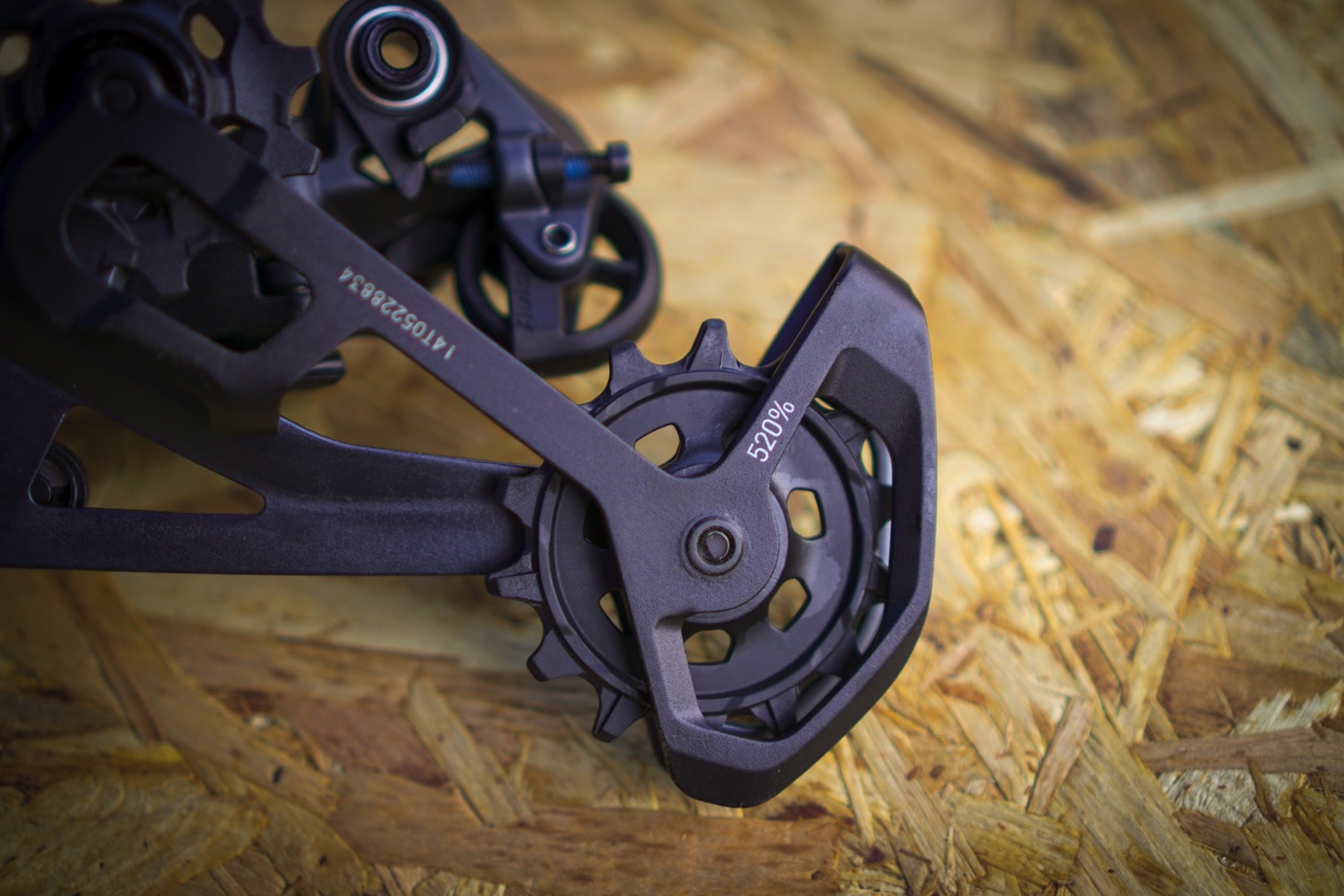
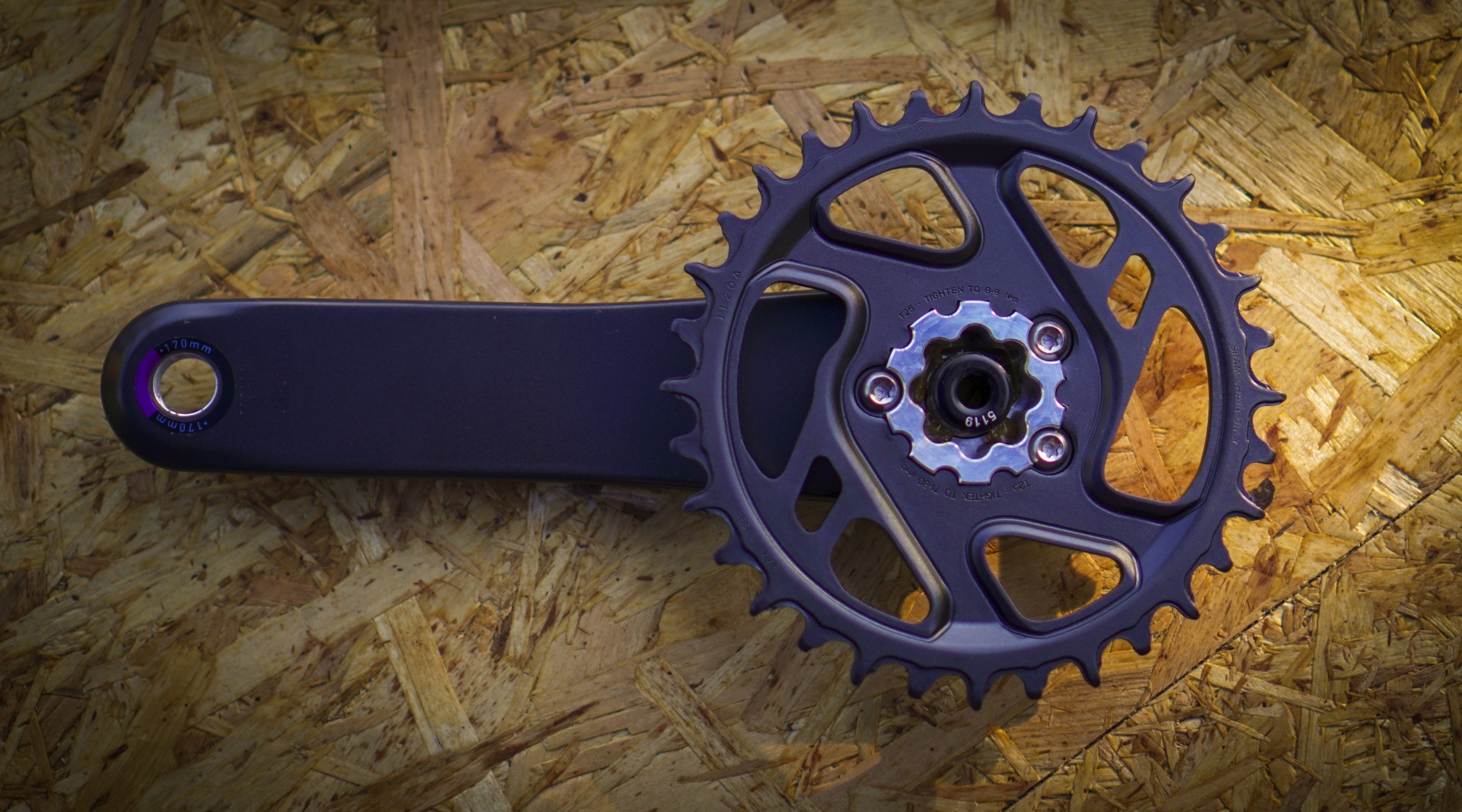
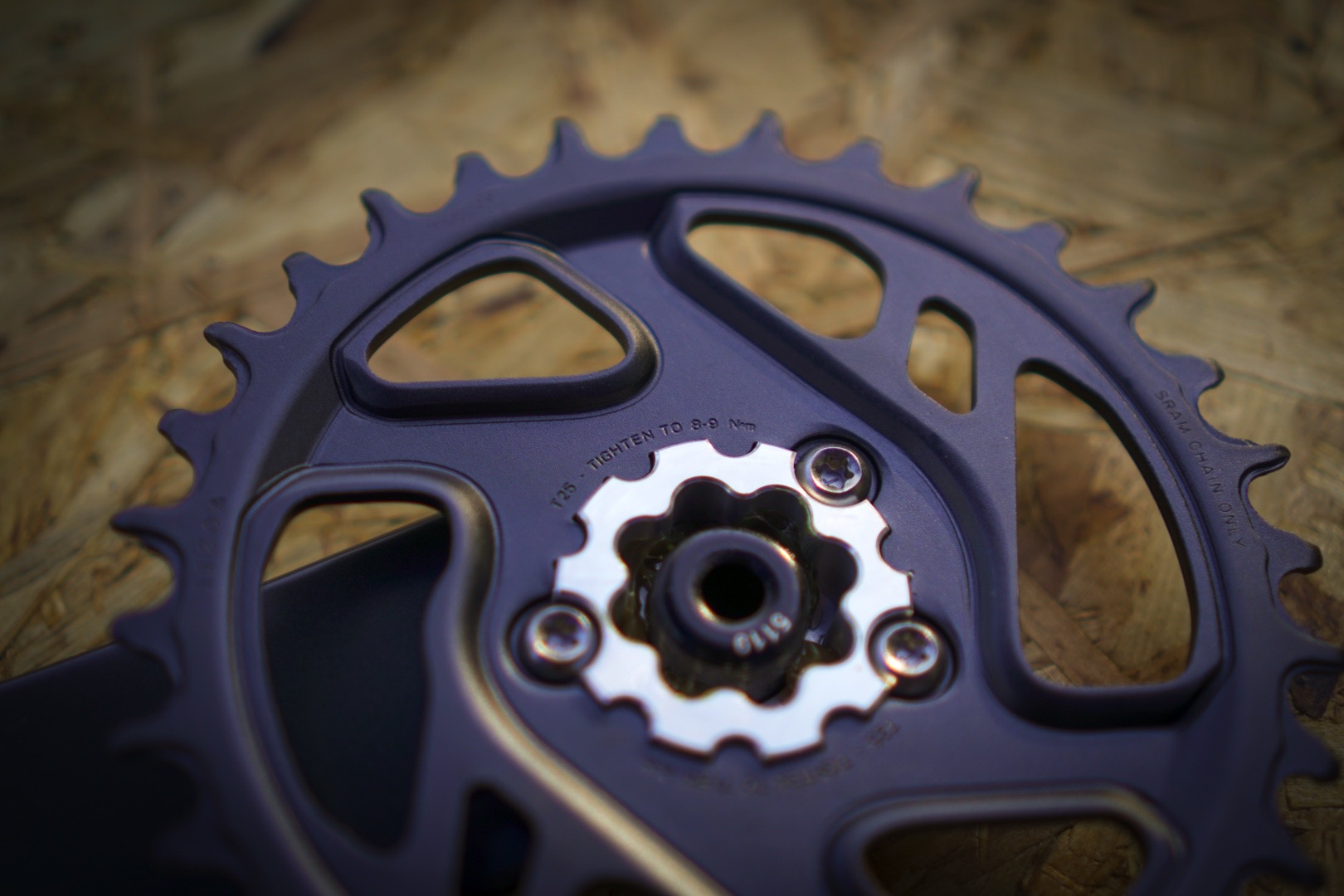
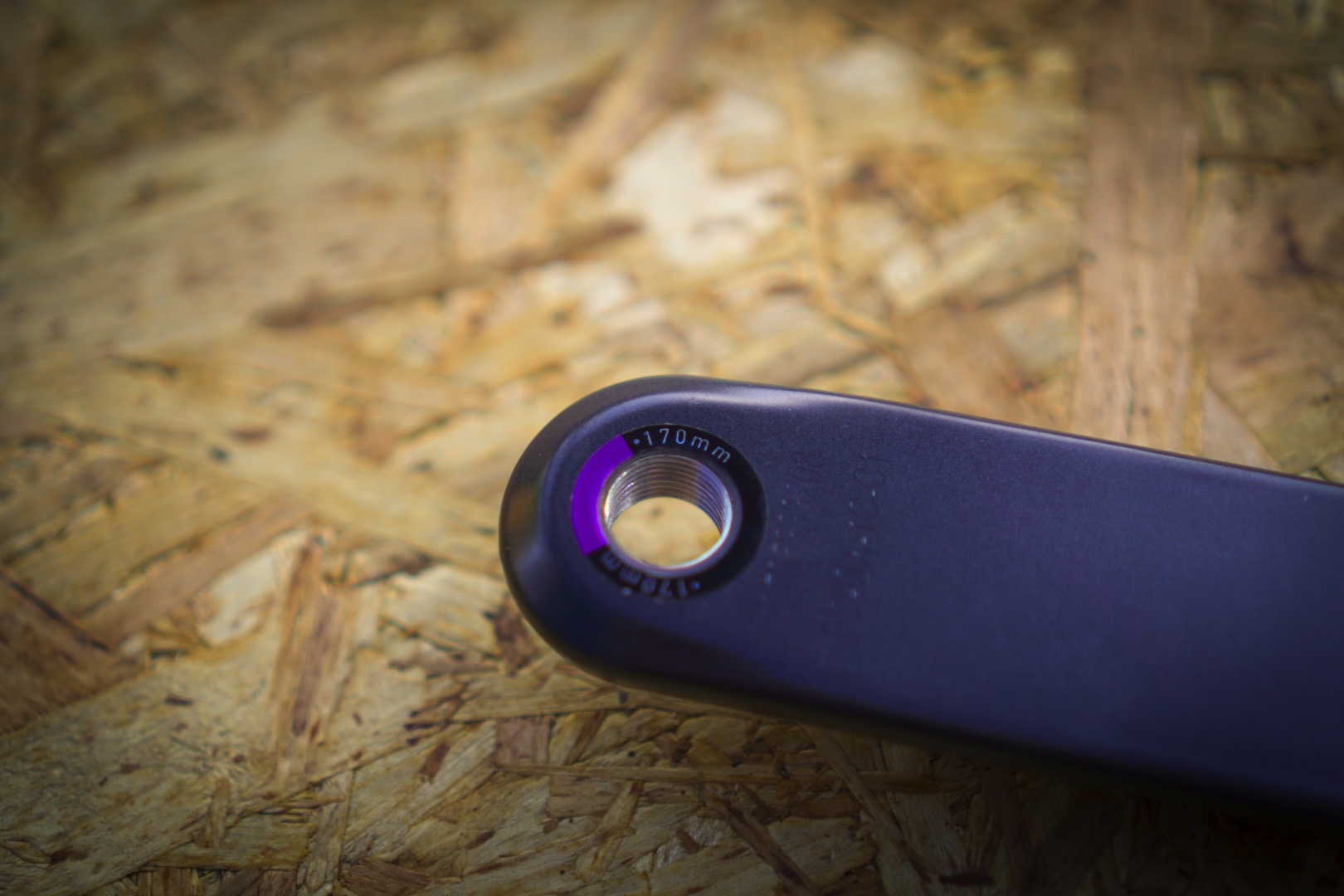
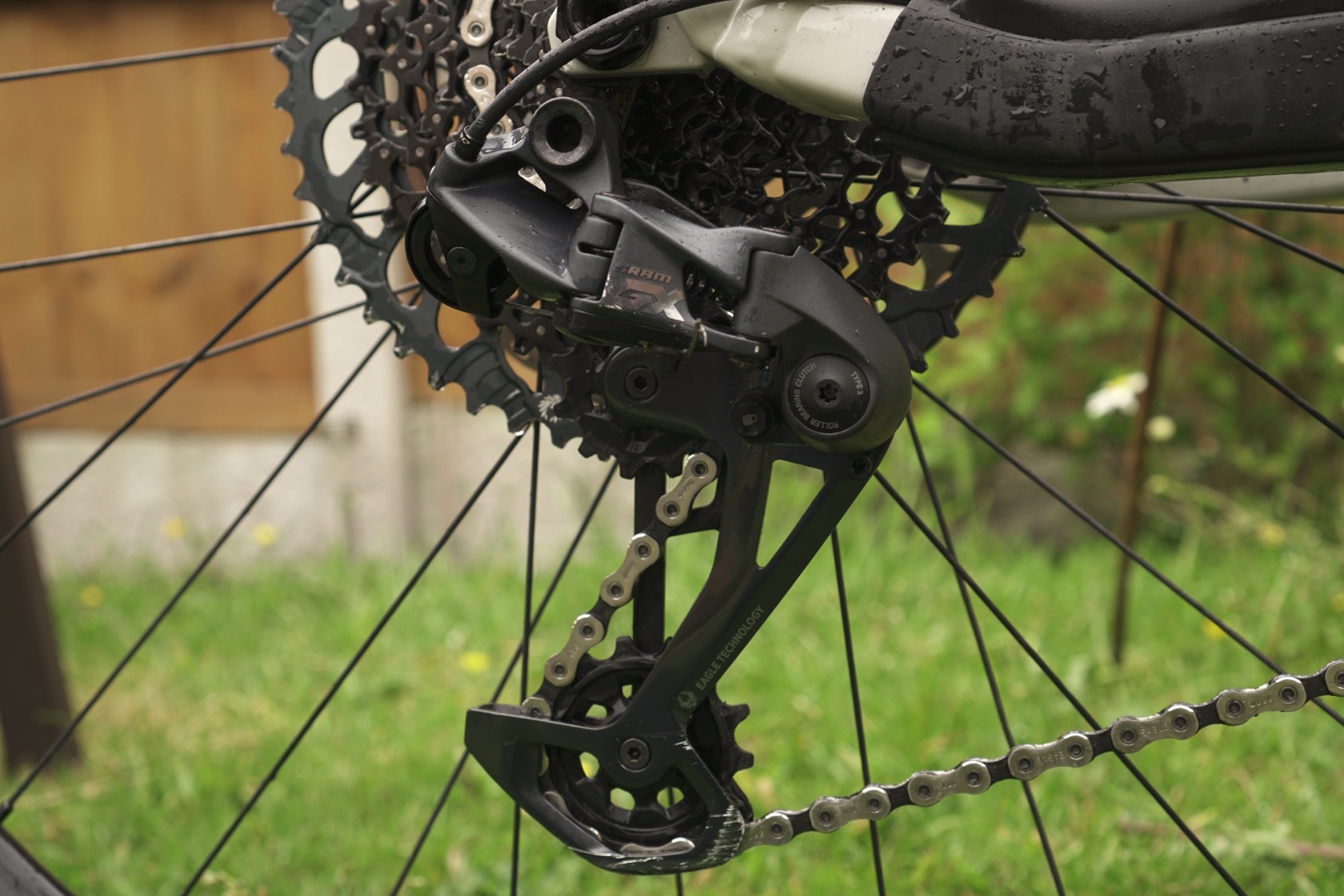

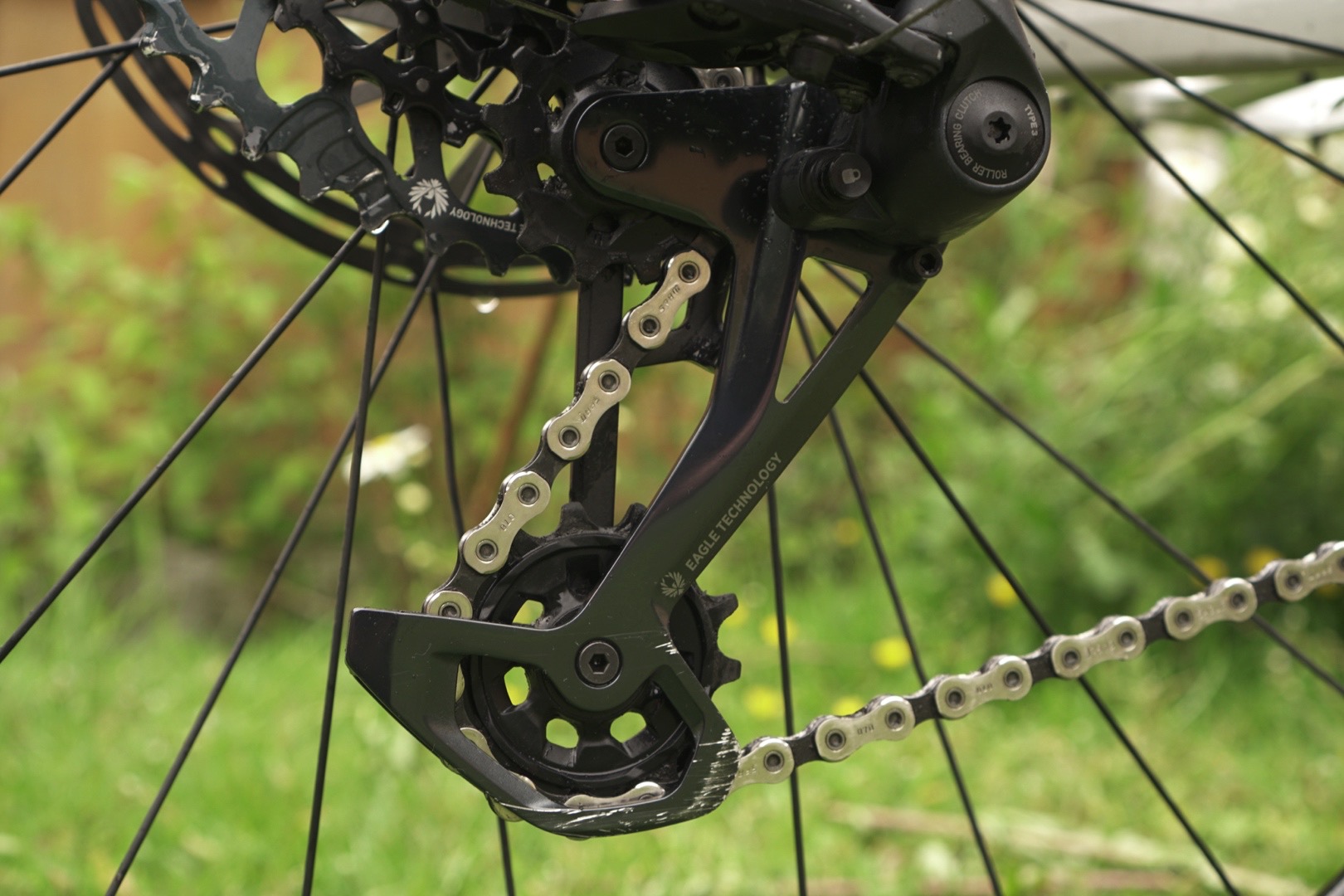
I think the question should be “Is it 4% better”? 🙂
(520% is 4% bigger than 500%)
Oh. Horatio beat me to it.
Is this really being touted as a 2022 group?
Let’s hope they keep producing the 50t cassettes and non-dub BBs. Wishful thinking hey.
42-52, I remember when that was called a chainset not the last two cogs on a cassette
Just no. Bigger and bigger (feels like one-upmanship over Shimano rather than any real-world advantage) is not always better. And the b-tension maintenance? Not something else to check, please. IMO Shimano drivetrains are more reliable, mech doesn’t stick out as much, and keep working with minimal maintenance. Range options are also fine. SRAM would be better making SX and NX more reliable than this new product. I’ll stick with my SLX.
All that hard work on the review totally blown by lack of understanding of percentages!
Why not drop the 12t & go 42t-46t-52t?